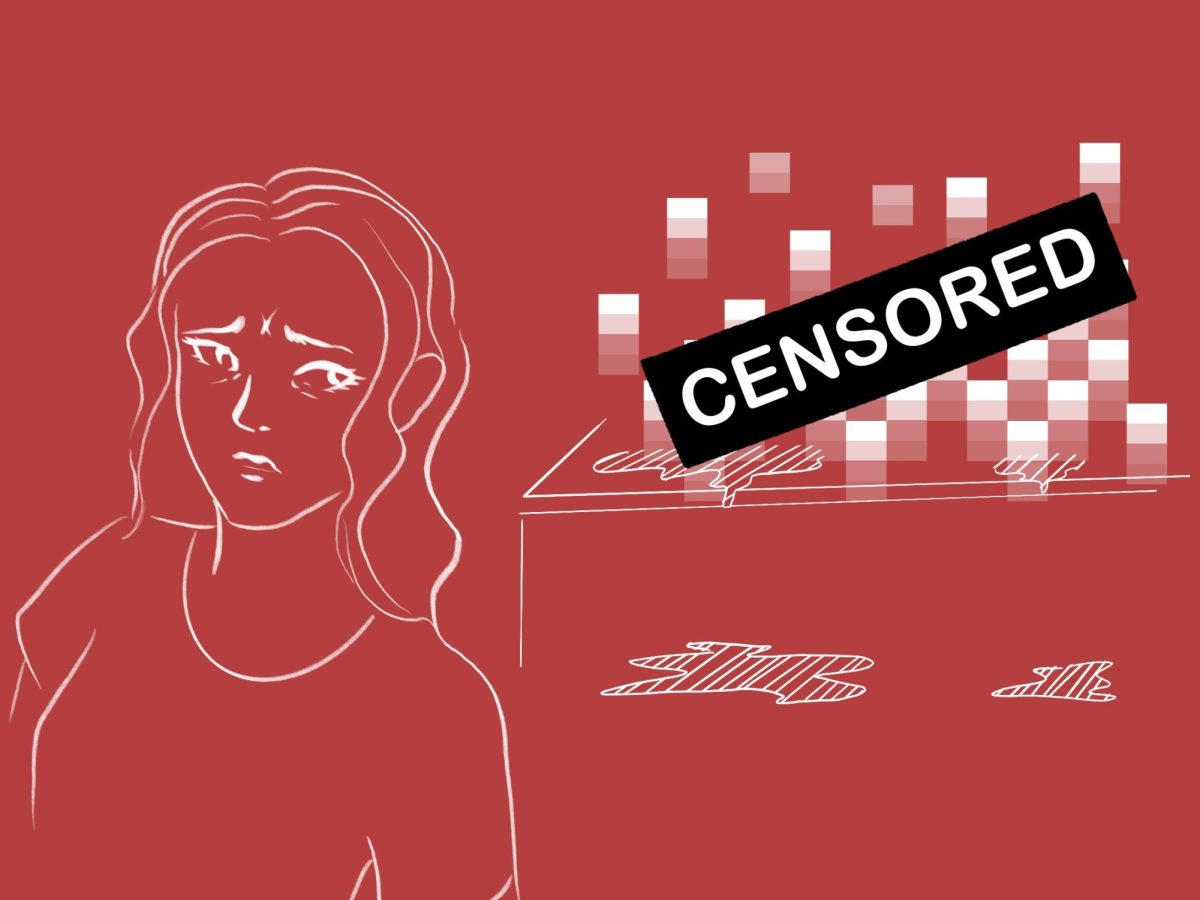Editor’s note: This article contains some mentions of torture, sexual assault and other topics that might be triggering to some readers.
Horror in itself is many things. From the psychological analog horror you can find on YouTube to big productions from companies like Blumhouse or Dread Central, there is always something new and scary to enjoy.
Recently, there has been an uptake in the production of horror movies, and it feels like everywhere you turn there is a new one coming out. Just recently we have had: “Smile 2,” the 2024 “Beetlejuice” reboot, “Terrifier 3,” “The Substance,” and “Alien: Romulus.”
Due to how saturated the genre is, there are a lot of different types of horror. My least favorite genre, one I think is only gaining in popularity, is gore or slasher movies.
While gore can be a great storyteller, it can also be a movie’s greatest downfall if overused.
Gore is used very commonly in horror movies, and there are many reasons why it may be implemented. In its most basic form, gore can be shocking or gross, which equates to fear in some people. Although it can also be used to show the depravity of a killer or entity, it can also invoke fear as the viewer watches their favorite characters break down both mentally and physically and can add personality to an antagonist.
Too much shock value?
There is such a thing as too much shock value.
Creating shock horror can be great if used in limited supply, but the second I am sitting through scene after scene after scene of just absolutely brutal murders, it becomes mundane. (I’m looking at you, “Terrifier.”)
In contrast, the “Scream” franchise is full of outrageous murders and gore but still continues to be praised as one of the best horror movies ever made. But these movies do not fully rely on that shock value to be good, allowing enjoyable characters (and antagonists), funny moments and horror that break away from being a “slasher” movie.
Personally, the constant twists and brutality can be great in short bursts but become annoyingly expected as time goes on. Many argue the “Saw” movies have begun to fall into this repetition, and I honestly find myself agreeing.
The need to be edgy
I’ve had countless experiences of walking out of a horror movie and the first thing I hear or see is “That wasn’t scary.” Even when watching it online and hearing others talking about it later saying “It was barely a horror movie.” I feel like I hear it every single time.
For some reason, people love telling everyone how “unscary” a movie was, which I think is part of the reason many companies have pushed into more graphic content.
TikTok, for example, is one of the most popular social media platforms, often generating conversation about pop culture. A year or so ago, the indie project, “Megan Is Missing,” got super popular. I remember seeing video after video about how scary it was.
While the concept itself was inherently scary, I would not use that word to describe the following conversation about online safety and predators.
Disturbing feels more fitting.
The movie has an intense and drawn-out torture scene that just seemed entirely unnecessary, as it did not move the plot forward at all and was put on late in the movie. Due to its placement, it serves almost nothing to the movie besides just being revolting.
Movies like these just hinge on being edgy, which just makes them feel hollow, without a fulfilling plot or lore-filled backstory.
Romanticism
There has been this odd trend of people romanticizing brutality, gore and the “wrong people” in the movie.
This has been around for quite some time now. There are many people who become obsessed with serial killers, to the point of gaining romantic feelings for them and then continuing to defend their unforgivable, yet fictional actions.
People who romanticize murderers, rapists and overall terrible criminals in these films need to gain a hobby, take a walk and investigate why this feeling is there in the first place.
In horror movies, gaining crushes on antagonists is not that big of a deal, as they are fictional characters committing fictional crimes. But, I have noticed that the brutality itself has become the part that is targeted instead.
With “Terrifier” specifically, the amount of times I have seen people call him a “cutie” or suggest that it was so “girly pop” of him to commit insanely heinous crimes is increasing. It gives me an icky feeling, even if it is just played off as a joke.
Horror movies do not need drawn-out assault and torture scenes to get the point across and still be scary. Yet, time and time again I see these movies receive praise for being “actually scary” or being the best.
These companies are pushing this margin because so many people seem to be genuinely asking for it. If we, as viewers, stop romanticizing and celebrating these types of films, then they will start to decline in numbers.
At the end of the day, a production team is trying to create a movie that people will watch, so all of us have the power to change where that market goes. Using that responsibly, like making an honest review or posting about the problems in this industry, can make a difference.





